I use ATTiny2313 microcontroller to drive a linear CCD imager. That's all it does - an infinite loop that toggles six IO ports at different times. However, it is only a 20MHz controller. I calculated that I need about 200MHz microcontroller. At these speeds they are 32bit and too big, and not made in DIP packages.
Does anyone have an idea of what I could use instead of microcontroller to get the same function? Unfortunately, not all the waveforms are 50% duty cycle:

I heard about XCR3256XL 256 Macrocell CPLD. Could someone tell me how I could use it?